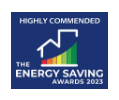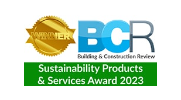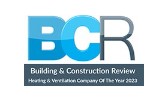How relocating heating and hot water systems in commercial buildings can drive real value from underutilised space…
The most valuable asset any business or organisation has is space, space to grow, develop and drive advantage. Within the built environment the drive for more space is a balancing act between granting applicable and preferably comfortable space for those using the building and meeting the infrastructural and systemic needs of operating the building.
There typically has to be some kind of give in the drive for creating or freeing up useable space if that activity impacts on the necessary systems, in particular heating, cooling, lighting and water.
Hotels are a great example of this drive to reclaim usable space. The hospitality industry is one of the most competitive there is. Hotels are continually fighting with the competition to offer the most affordable rates, the best amenities, and the most outstanding guest services — all while also making a profit. The easiest way to charge more for a room is by adding space to it, or by adding more rooms in total. Either way that is going to help improve the bottom line. The same goes for restaurants, where maximising floor space means more tables. Whilst hoteliers and restaurateurs will look to every square centimetre of their properties for opportunities to maximise revenue, other organisations will have very different drivers. Consider schools, where larger class sizes have increasingly driven a demand for teaching space. How many schools have had to surrender playing fields to locate portacabin style classrooms which are obviously not ideal?
This brings us to the kinds of underutilised or wasted ‘dead’ space in and around buildings. Internal space is potentially incredibly valuable, so leveraging external space to free it up can be truly advantageous. The question is what can be given up to makes such gains? The simple answer might be your HVAC plant.
Plant rooms, or boiler houses as they were known, vary from purpose-built to jury-rigged spaces used to accommodate heating and hot water systems. Basements are typically repurposed in older commercial buildings, whilst it is not unusual to find them tucked in amongst other rooms creating a mixed-use setting. Wouldn’t it be advantageous to separate such building services and relocate them away from those using the building whilst improving the efficiency of the system for a host of benefits including lower operational costs and reduced emissions?
Simply upgrading to a new gas condensing boiler or electric water heater can deliver notable efficiency improvements over models from just 10 years ago, and today’s modern appliances pack that into much more compact, space-saving formats. So, you could gain greater capability from a smaller footprint in your plant room, and potentially reclaim a few square meters. But what if you could reclaim the entire plant room?
Refurbishing plant to a new location may sound drastic, but that needn’t be the case. Increasingly the construction industry has embraced the idea of offsite construction, creating modular units or systems that are pre-installed and ready for relatively quick and simple connection once delivered to a site. The process streamlines a construction programme along with offering numerous savings as site work is dramatically sped up. Now, this process can be as easily applied to refurbishment projects as it is to new build. All you need is an underutilised space. For many commercial buildings that means flat roofs, yards or car parks, spaces that are inexpensive to adapt, require low to no maintenance and have either been ignored or are underused.
With the proliferation of car ownership, it might at first seem unlikely that the car park is being underused. But the drive to encourage walking, cycling and car-sharing has had an impact, and developers who have previously pushed for more open parking space than ever before are now being challenged to repurpose some of that space. In terms of Identifying functional opportunities to better leverage this space, the siting of plant fits the bill. Turing over just one or two car spaces can have a dramatic impact on the capability of heating system, providing enough square meterage to easily accommodate a mid-sized packaged plant room offering, for example, a boiler cascade and heat exchanger assembly. Or the space could be used to locate Air Source Heat Pumps (ASHP) that drive system sustainability whilst lowering CO2 emissions.
Relocation to flat rooftops is especially valuable. This is truly ‘dead space’ for most buildings, but it provides a broad opportunity to relocate heating and hot water plant safely and more securely. A simple crane lift is all it takes to locate a prefabricated plant room, and these can be of considerable size and complexity should the roof space be large enough to accommodate. Additionally, the space lends itself to locating hybrid systems that integrate renewable and sustainable technologies. We have already mentioned the use of ASHPs, and a rooftop placement not only typically supplies unimpeded airflow, the noise, though relatively low, now becomes almost unnoticeable to those on the ground.
Flat roofs are also perfect for the installation of solar thermal systems, where a framework is constructed to align the collectors for optimal energy collection. That energy is then transferred to the building’s water system. One of the biggest threats to the efficiency of a solar thermal system is the heat loss between the collector and hot water storage, which results from potentially long pipe runs from the roof to the plant room. By locating the plant room on the roof, pipe run is minimised as are thermal losses, so you get more energy for your investment.
These are just a few examples of where Adveco’s application design, system prefabrication and expertise in hybrid and renewable technology can help maximise underutilised space. Modern, high-efficiency systems deliver new versatility for addressing changing demands of the building whilst still reducing operational expenditure on energy and helping drive actual sustainability within an organisation.
If your business or organisation is looking to
Talk to us today or read more about our renewables and packaged plant room systems.













